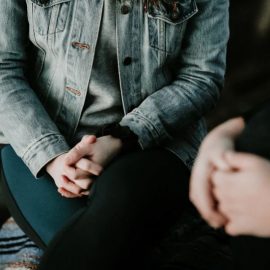

This article is an excerpt from the Shortform book guide to "The Laws Of Human Nature" by Robert Greene. Shortform has the world's best summaries and analyses of books you should be reading.
Like this article? Sign up for a free trial here .
How can understanding group dynamics help you succeed? Why do people change their behavior in groups?
Understanding group dynamics means you know how people’s behavior changes in groups and why. Social forces can alter how people behave in groups and change the way we see ourselves.
Read more about understanding group dynamics and what you can learn about group dynamics psychology.
Understanding Group Dynamics and Social Forces
In the previous part, we looked at some of the emotions that everyone experiences. Now, we’ll look at how our emotions change when we’re around others, in groups, or following a leader as a part of understanding group dynamics.
Social force is the energy of collective emotions, and it affects all of us. This is an important part of understanding group dynamics. When in groups—at a concert, rally, and so on—we all feel the same emotions, based on what the rest of the group is feeling. This comes from a survival mechanism—in older times, if one person noticed danger and felt fear, their emotion would spread throughout the group and quickly alert the others to a possible threat. If multiple people felt the same emotion, presumably there was a good reason, so the emotion legitimized as it spread.
Social force also affects us when we’re:
- Speaking to a group. If the crowd supports us and we don’t get stage fright, as speakers, we feed off the group’s energy. We might become more animated than usual.
- Being addressed by a charismatic leader. This person’s energy rubs off on us.
- Working in a group. When we have a collective goal, we feel more energized and work harder. We might not even have to talk to communicate.
- Outside a group. When we encounter a group we’re not part of we have an intense feeling of not belonging, and this can feel frightening. (We may feel this even if the group isn’t antagonistic.)
- For example, on your first day at a new workplace, you’re entering a social situation where everyone else already knows each other and the rules, except you, so you may feel destabilized.
Social force has several qualities that can help in understanding group dynamics:
- It’s both external and internal. When we feel an emotion as part of a group, we know that others are feeling it as well.
- It changes depending on the group. Usually, the bigger the group, the stronger the force. Additionally, certain individuals, especially, the leader, can affect the group’s energy if the individual is prone to a certain emotion.
- It’s present in digital and virtual settings, such as social media, but it’s less strong than in a physical setting like a crowd.
- It isn’t inherently positive or negative. Social force evolved to keep us safe, but in the modern world, some of its tendencies are inappropriate. For example, we evolved to dislike outsiders because it helped us survive—outsiders could have been aggressive or carry diseases. Today, though, disliking outsiders is inappropriate.
- We’re attracted to this force. Almost everyone inherently likes partisan crowds because they give us energy.
- When we don’t get enough of this social force and are isolated, we decline. We lose touch with reality and our own existence.
- We come up with rituals to strengthen the bonds within the group, such as political assemblies.
- Eye contact is particularly important for social force. When we feel someone’s gaze on us, it confirms that we’re real and validates our belonging.
- Even though we require it, we’re not completely comfortable with the idea of social force and we rarely talk about it or even become aware of its existence. The force makes us uncomfortable because it makes us feel primitive and because we like to imagine we have control over ourselves. But if we’re not aware of it, we’re even more susceptible to it. We copy others, let them influence us, and do things we wouldn’t if we were alone.
Understanding group dynamics can help you understand how people’s behavior changes in groups, and why.

———End of Preview———
Like what you just read? Read the rest of the world's best book summary and analysis of Robert Greene's "The Laws Of Human Nature" at Shortform .
Here's what you'll find in our full The Laws Of Human Nature summary :
- Why it's in your nature to self-sabotage
- How you behave differently when you're in a group
- Why you're wired to want the wrong things in life






